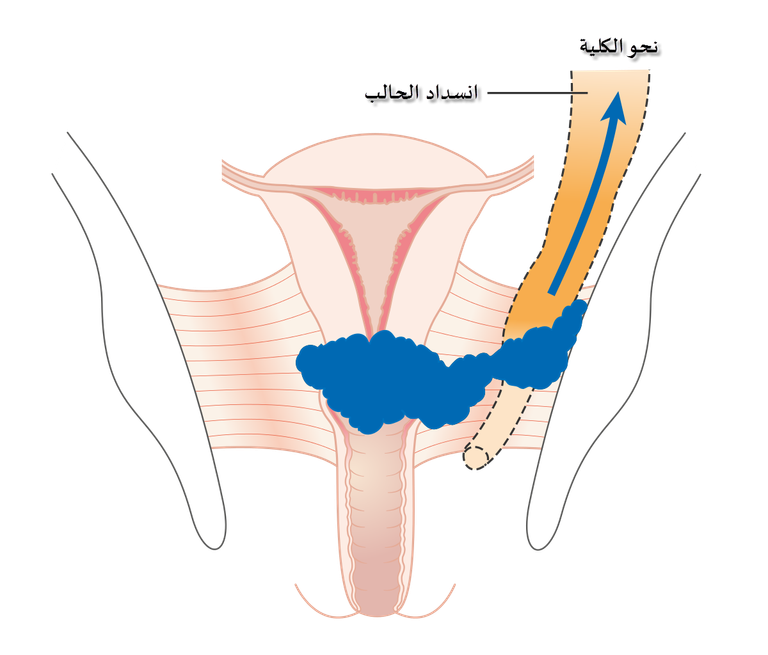As we continue to learn, there are different forms of cancer, some worse than others but in general, there is nothing good about having any of them. As we continue to learn about this dreadful disease, we focus on cervical cancer today.
We must know what the cervix is, it is the lower part of the uterus which connects to the vagina, it has the look-alike of a donut and connects the uterus to the vagina opening. It is covered up in tissues, and these tissues are made up of cells, the supposed healthy cells can grow and turn into precancerous cells. Knowing where the cervix is, is a strong baseline to help us understand what we will be talking about.

Image source
Cervical cancer as the name implies has to do with the growth of cells beginning in the cervix, usually at the surface of the cervix. Its occurrence is usually a result of the cells on the cervix changing into precancerous cells. Although not all precancerous cells turn into cancer, figuring out which of them is a problematic cell and treating them before change happens is very important in the prevention of cervical cancer.
Human papillomavirus (HPV) plays a strong role in causing cervical cancers, it is a common infection that is passed through sexual contact. When the body gets exposed to HPV, the immune system prevents the virus from doing any harm, but in a small percentage of people, the virus can survive for years, which contributes to cervical cells becoming a cancerous cell.
Reports show that about 14,000 people who live in the United States are diagnosed with cancer on a yearly base, while about 4,000 people die as a result. People between the ages of 35-44 are the ones who are mostly diagnosed, but recently, there has also been a noticed decline in these numbers and this is due to screenings and HPV vaccine.
There are usually no noticeable symptoms at the early stage of cervical cancer which is usually difficult to detect. It may take years before the early signs of cervical cancer even begin to develop. Detecting cervical cancer during cancer screenings is one of the best ways to avoid cervical cancer.

Image source
Cervical cancer comes in different stages;
Stage one of cervical cancer is only found in the cervix, it hasn't spread yet. In the second stage, cancer has spread beyond the uterus and cervix but is yet to spread to the pelvic wall or your vagina.
In the third stage of cervical cancer, it has spread to the lower part of the vagina and may spread to the pelvic wall and lymph nodes.
Stage four cancer, which is the final stage of cervical cancer means it has spread to the rectum, bladder, or other parts of the body like the lungs or the bones.
Stage one cervical cancer could later come with symptoms such as; * Vaginal bleeding after sex, after menopause, and between menstrual periods.
Menstrual periods may become heavier and last for a longer time than usual.
The presence of a watery or bloody vaginal discharge that may be heavy, and then create a foul odor.
When cancer spreads to other organs or tissues, accompanying symptoms will include;
- Loss of weight, appetite, and fatigue.
- Painful urination, in some cases with urine or blood.
- Swelling of the legs and a dull backache.
- Abdominal/pelvic pain.
- Diarrhea, painful bleeding from the rectum while pooping.
People put themselves at risk of developing cervical cancer through some lifestyle occurrence, some of them are;
Multiple sexual partners: The higher the number of sexual partners you have, the higher your chances of getting HPV.
Smoking increases the possibility of cervical cancer, when HPV infections happen to those who smoke, the infections would last for a longer time.
The existence of other sexually transmitted infections, also called STIs, will increase the chances of HPV which will eventually result in cervical cancer.
Engaging in sexual activities at an early age will increase the chances of HPV.
A weak immune system has a higher chance if the immune system is weakened by the existence of other health conditions. In a case where your mother took a miscarriage medicine called diethylstilbestrol (DES) during pregnancy will increase the chances of cervical cancer.
To limit the chances of cervical cancer, ask your doctor for an HPV vaccine, practice safe sex, quit smoking, and have a routine pap test.
The treatment for cervical cancer requires the help of a gynecologic oncologist. The treatment for cervical cancer is dependent on several factors including the stage, age, and general health of the disease. Radiation, surgery, radiation, immunotherapy, and targeted therapy are available treatment options.
For Further Studies.
https://www.mayoclinic.org/diseases-conditions/cervical-cancer/symptoms-causes/syc-20352501
https://my.clevelandclinic.org/health/diseases/12216-cervical-cancer
https://www.cancer.gov/types/cervical
https://www.healthline.com/health/cervical-cancer

Hi, I am Tobi a writer, speaker, relationship blogger, and lover of good music. I love making friends and learning from people. If you want to hear me speak on relationships and general life issues, you can find my YouTube channel where you can watch any episode for free, please do not forget to subscribe, friends. I sincerely appreciate every love I get from here, Kindly do well to keep them coming.
